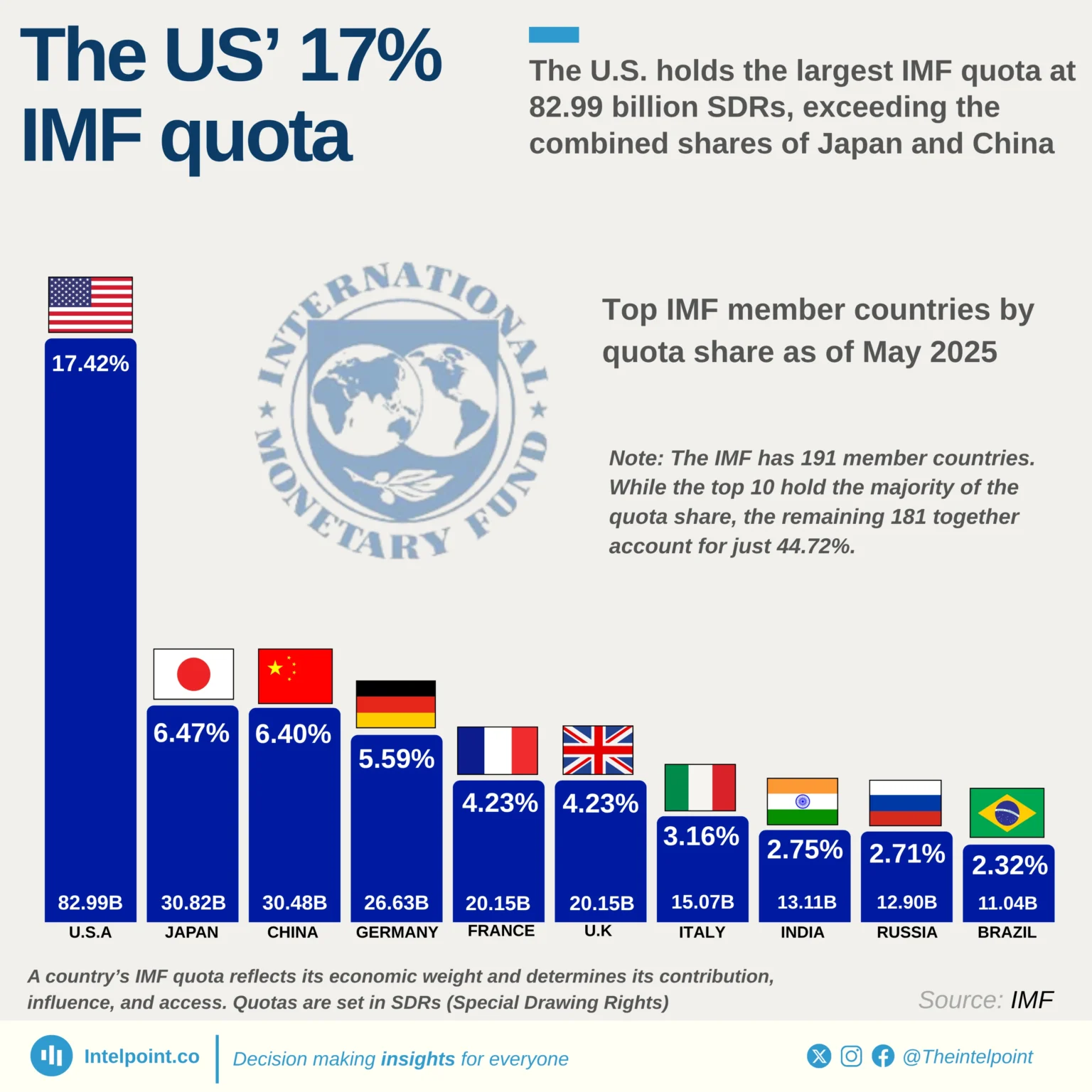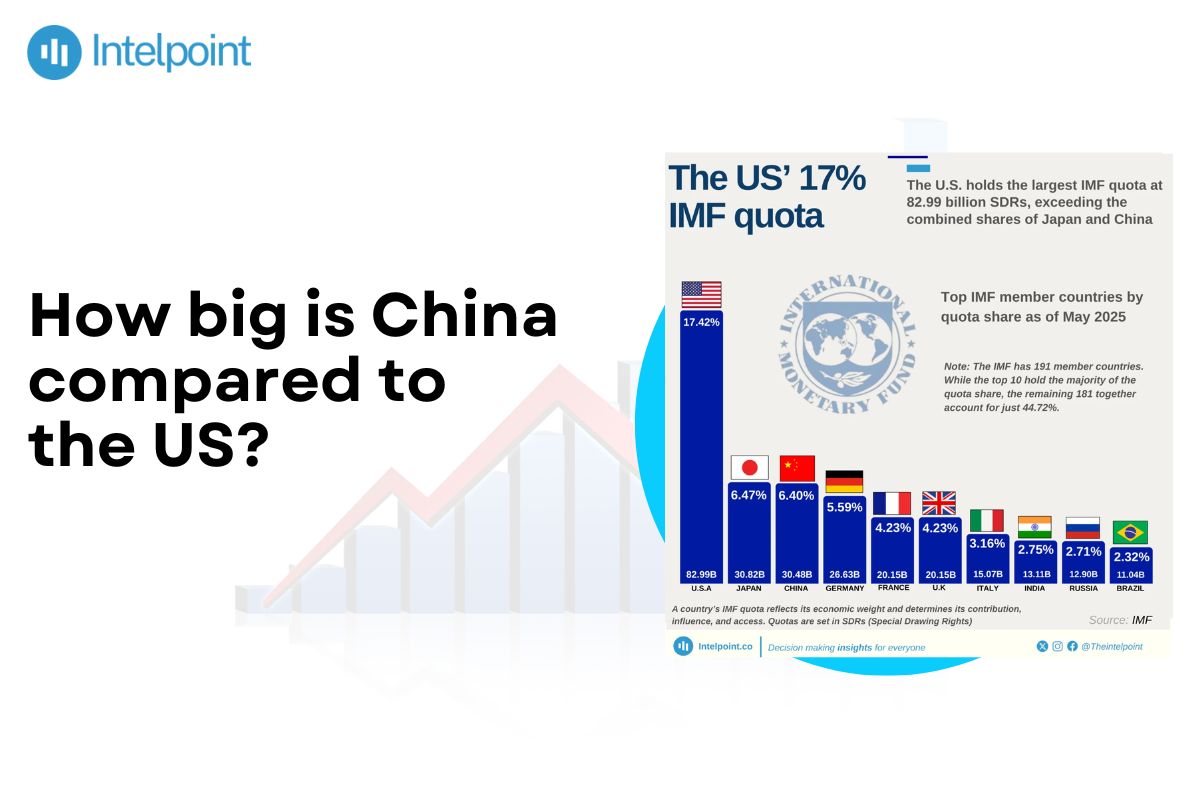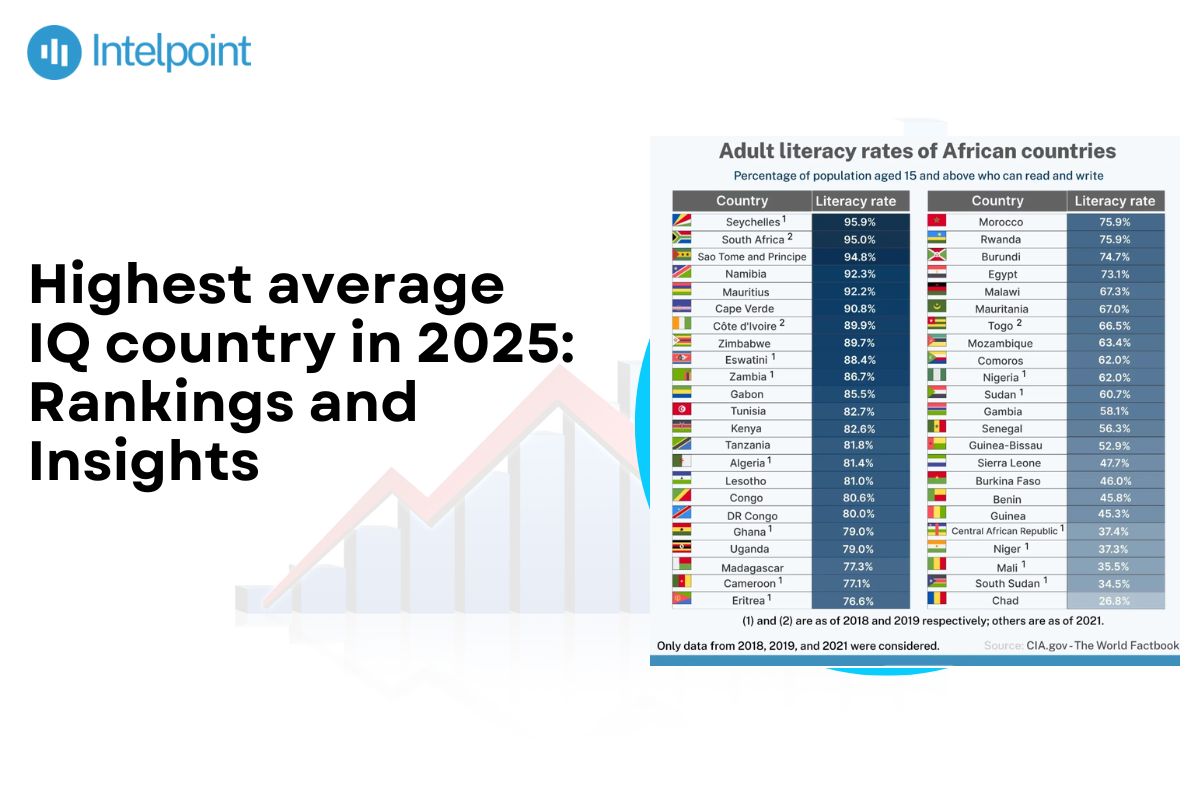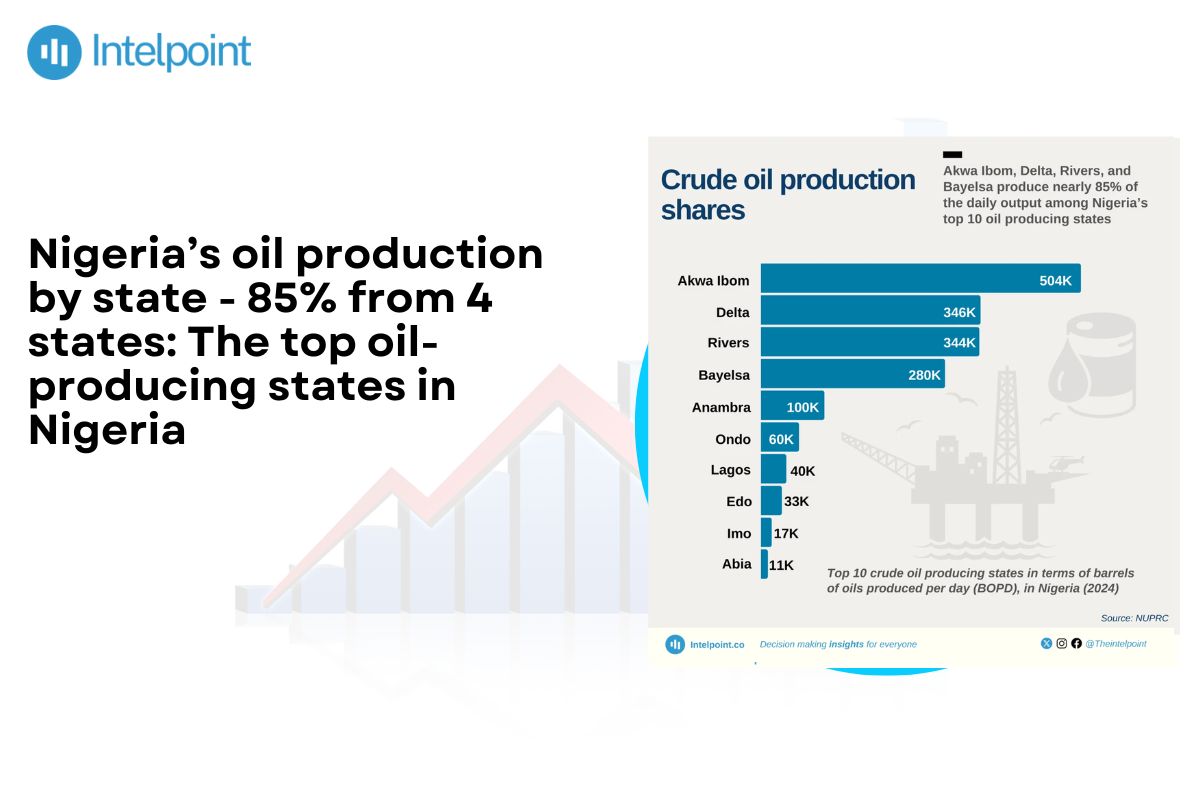Is China actually bigger than the United States? The answer depends on what you mean by “bigger.”
With China having over four times the population of the U.S., it often seems like the most straightforward way to measure a country's scale and influence, but it’s only one piece of the puzzle.
In this article, we’ll compare China and the U.S. across several key factors, including geography, population, economy, politics, and global influence, to gain a fuller understanding of how these two countries compare to each other.
Key takeaways
- China and the United States are nearly equal in size but differ significantly in population. China's land area is actually slightly larger than that of the U.S., by about 230,000 km², when comparing land only.
- China has a much higher population density and diverse terrain ranging from deserts to the Himalayas.
- Economically, the U.S. leads in nominal GDP, but China surpasses it in purchasing power parity, with both economies driving global growth through different sectors.
To help you quickly grasp how China and the United States compare across key areas, here’s a side-by-side look at their geography, population, economy, political systems, and military strength. This table highlights both the similarities and the differences between these two global powers.
| Category | China | United States |
| Total land area | ~9.6 million km² | ~9.83 million km² |
| Population (2025 est.) | ~1.42 billion | ~347 million |
| Population density | ~150 people per km² | ~36 people per km² |
| Urbanization rate | 67.55% | ~82% |
| Nominal GDP | $19.23 trillion | $26.7 trillion |
| Projected growth review | ~4.0% | ~2.5% |
| Political system | One-party communist state | Federal democratic republic |
| Military budget (2024) | $365 billion | $800+ billion |
| Coastline length | ~14,500 km | ~19,924 km |
Geographical size and diversity
China spans approximately 9.6 million square kilometers (3.7 million square miles), making it the world's third-largest country in terms of land area.
The U.S. is slightly larger, spanning around 9.83 million square kilometers (3.8 million square miles). Much of the U.S.’s size includes extensive water bodies, such as the Great Lakes.
Both countries feature diverse landscapes:
- China has the Himalayas, the Tibetan Plateau, deserts such as the Gobi, and major rivers, including the Yangtze (6,300 km) and the Yellow River (5,464 km).
- The U.S. boasts the Rocky and Appalachian Mountains, the Great Plains, deserts in the southwest, and rivers including the Mississippi (3,780 km) and Missouri (3,767 km).
Climate zones vary widely across both countries, ranging from tropical to subarctic regions. China’s climate spans from tropical in the south to subarctic in the north. The U.S. experiences Arctic conditions in Alaska and tropical weather in Florida and Hawaii.
Population size and demographics
China is the world’s most populous country, with an estimated population of 1.42 billion as of 2025. This number is more than four times the population of the United States, which stands at about 347 million people. The sheer scale of China’s population impacts everything from its labor force to urban planning and social services.
Population density highlights these differences even more. China has an average population density of approximately 150 people per square kilometer, with the eastern provinces being notably more densely populated. In contrast, the U.S. has a much lower density, approximately 36 people per square kilometer, reflecting vast rural areas and less crowded urban regions.
Urbanization in China has accelerated rapidly over the past few decades. Approximately 60% of the Chinese population now resides in cities, with many living in megacities such as Shanghai and Beijing.
Meanwhile, the U.S. is even more urbanized, with approximately 82% of its population residing in urban areas, including major cities such as New York, Los Angeles, and Chicago.
Both countries face demographic challenges.
China’s population growth has slowed due to lower birth rates, partly as a legacy of the one-child policy. This has resulted in an aging population and concerns about future workforce shortages.
The U.S., while experiencing lower birth rates, benefits from higher immigration levels, which help maintain a younger and more diverse population.
Ethnic diversity also differs. China officially recognizes 56 ethnic groups, with the Han Chinese making up over 90% of the population. Minority groups, such as the Tibetans and Uighurs, mainly reside in border regions. The U.S. is one of the most ethnically diverse countries globally, with a long history of immigration creating a multicultural society.
Economic scale and performance
In 2025, China’s nominal GDP is estimated at around $19.23 trillion, while the United States leads with approximately $26.7 trillion.
However, when measured by purchasing power parity (PPP), which accounts for the difference in the cost of living, China’s economy surpasses the U.S. According to StatisticsTimes, on a PPP basis, China is ahead of the US by above $10 trillion in 2025, with a PPP GDP of approximately $40.72 trillion, compared to the United State’s $30.51 trillion.
China has maintained rapid economic growth over the past few decades, and its projected growth rate for 2025 is around 4.0%, outpacing the U.S. forecasted rate of approximately 2.5%. Large-scale manufacturing, export-led industries, and the expansion of technology sectors drive this growth.
- Nominal GDP (2025): China ~$19.23 trillion; U.S. ~$26.7 trillion
- GDP (PPP, 2025): China ~$40.72 trillion; U.S. ~$30.51 trillion
- Projected economic growth (2025): China ~4.0%; U.S. ~2.5%
China remains the world’s manufacturing hub, leading in electronics, steel production, textiles, and increasingly, high-tech industries like artificial intelligence and renewable energy.
The United States, on the other hand, has a more diversified economy with strengths in technology, finance, healthcare, and services.
Trade plays a crucial role for both economies. China is the largest trading partner for many countries and continues to expand its global trade reach through initiatives like the Belt and Road Initiative.
The U.S. maintains numerous trade agreements and holds a strong position in international finance, with the U.S. dollar serving as the world’s primary reserve currency.
- Major industries in China: Manufacturing, electronics, textiles, AI, and renewable energy
- Major industries in the U.S.: Technology, finance, healthcare, services
Meanwhile, the United States holds the largest International Monetary Fund (IMF) quota by far, with 82,994.2 billion SDRs, accounting for 17.42%, more than double the quota of any other country.
The International Monetary Fund's quota system is both a financial commitment and a measure of influence, revealing the stark hierarchy of global economic power as encoded in SDR allocations.
Japan, China, and Germany follow as the next largest contributors, each holding between 5.5% and 6.5% of total quota shares.

The United States stands at the top, commanding over 17% of total quota shares, a position that gives it significant weight in key IMF decisions, including the power to block major resolutions that require a supermajority.
International relations and global influence
China and the United States both hold significant global influence, but they approach international relations in different ways.
The U.S. has approximately 261 diplomatic missions abroad, including 173 embassies and 88 consulates, according to VisaPlace. It is a founding member of major international organizations such as NATO and the United Nations and exerts substantial influence through its military alliances and economic partnerships.
China has the largest global network of diplomatic missions, with 274 embassies and consulates. This includes both embassies and consulates, which are located in various countries worldwide.
While both nations compete for influence, their strategies differ: China focuses on economic diplomacy and regional expansion, while the U.S. leverages its military alliances and global leadership in institutions.
This competition has a significant impact on the current geopolitical landscape.
Final note
China and the United States are two global giants closely matched in many ways, yet fundamentally different in others.
While their land areas are comparable, their population sizes and densities reveal very different social dynamics.
Economically, both countries lead the world, but through distinct strengths: China, with its rapid industrial growth and expanding global infrastructure projects, and the U.S., with its established financial systems and technological innovation.




